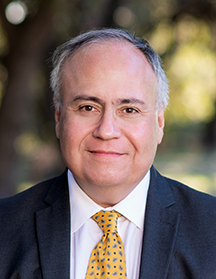• By Hector Bojorquez • Knowledge is Power • January 20, 2022 •


We examined the fact that Jefferson was adamant about the separation of church and state and that among his rationales that he believed in the powers of reason over superstitious religious ideas, like miracles. This truth can make many of our students and their families uncomfortable. After all, how could one of the founders of this country have such little respect for religion? How can this truth be discussed in our classroom?
Some classroom censorship laws indicate that teachers should use “primary documents with students when teaching about U.S. founding documents,” as Texas’ law states. Let’s explore a lesson plan or classroom activity using primary and secondary sources that can help us teach these issues. (I will use the Texas standards for this example for simplicity.)
Teaching with Primary and Secondary Sources
Teaching with primary and secondary sources is the 6-8 Social TEKS in Texas because it helps students establish the difference between an article or artifact around a historical event or issue and texts that were written to report on, summarize or interpret an event. It also helps students understand the difference between evidence, historical accuracy and historical interpretations and propaganda.
A sample lesson in this skill could be taught in the high school course, “United States Government.” The correlated TEKS are Chapter 13, Subchapter C, Rule §113.44 (a)(b)(1),(2) and (a)(c)(1)(B).
- 113.44 (a)(b)(1,2) Support the teaching of the essential knowledge and skills, the use of a variety of rich primary and secondary source material such as the complete text of the U.S. Constitution, selected Federalist Papers, landmark cases of the U.S. Supreme Court (such as those studied in Grade 8 and U.S. History Since 1877), biographies, autobiographies, memoirs, speeches, letters, and periodicals that feature analyses of political issues and events is encouraged.
- 113.44 (a)(c)(1)(B) Identify major intellectual, philosophical, political, and religious traditions that informed the American founding, including Judeo-Christian (especially biblical law), English common law and constitutionalism, Enlightenment, and republicanism, as they address issues of liberty, rights, and responsibilities of individuals.
Lesson Guiding Context
Thomas Jefferson was an intellectual man of his time who believed that all natural mysteries could be explained by ever-growing scientific discoveries. He did not believe in miracles or in supernatural explanations. However, he was a great believer in the moral lessons found in the New Testament of the Christian Bible. Because of this tension, he “edited” the New Testament and removed mentions of any supernatural events, such as resurrection and miracles.
Secondary Resource Activity
Have students find information about his religious opinions using the secondary resources on the Monticello website. These can be articles, websites and documents. The Monticello website is the portal to online information about Thomas Jefferson’s 5,000-acre plantation and a resource concerning Jefferson’s life and times.
Students will:
- Use the search engine within the Monticello website, or
- Use a Google site search feature by typing the following into the search box: site: Monticello website. “Jefferson Bible” (see more information on this tip.)
- Write a brief summary of what they find.
Remind students that a primary resource refers to the actual texts, objects or artifacts themselves. This is where you can explain about the usefulness of the primary resources to present facts.
Primary Resource Activity
Ask students to find the “Jefferson Bible” in the National Museum of American History’s website and the Smithsonian website. The National Museum of American History’s website contains digital versions of primary resources that students can view.
Students will
- Use the search engine within the American museum website.
- Use the search engine within the Smithsonian website.
- Write a brief summary of what they find.
Reflection
Ask students to answer these journal prompts over a three-day period
- Why is it important to know what Thomas Jefferson thought about religion?
- How did Thomas Jefferson’s views on religion influence the constitution?
- Why did people from his time think that religion and state (government, etc.) should be separated?
This activity helps students have confidence in understanding the truth and evidence behind issues that some may find uncomfortable. Any truth and all knowledge is simply unassailable when we find the primary resource, the proof itself behind our history.
[©2021, IDRA. This article originally appeared in the January 20, 2022, edition of Knowledge is Power by the Intercultural Development Research Association. Permission to reproduce this article is granted provided the article is reprinted in its entirety and proper credit is given to IDRA and the author.]


